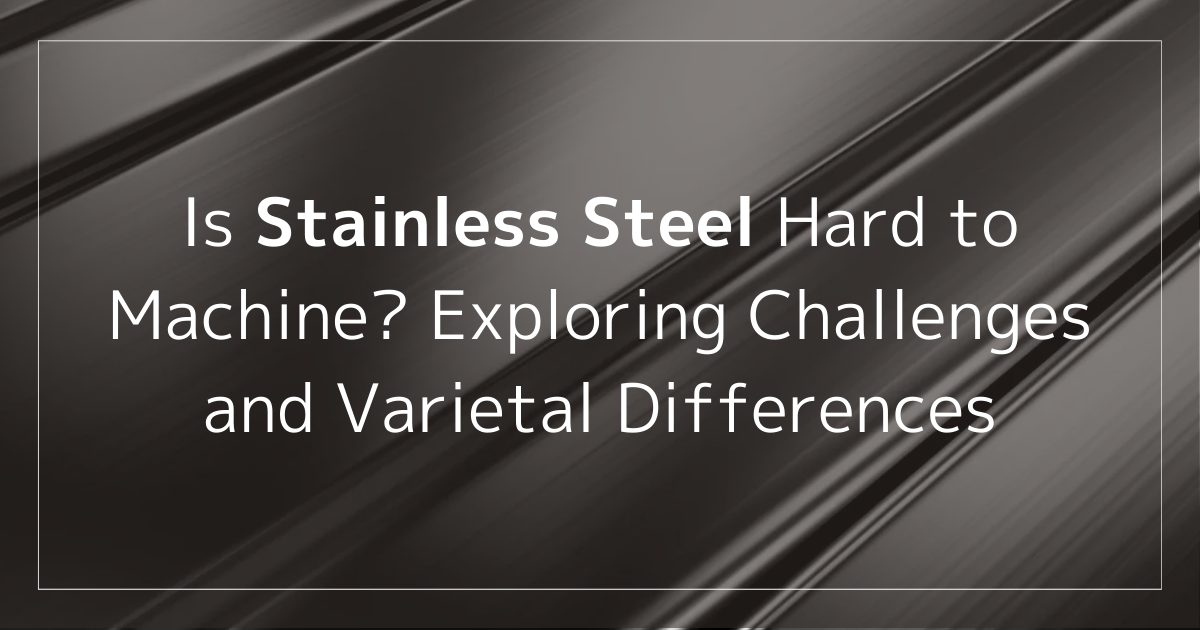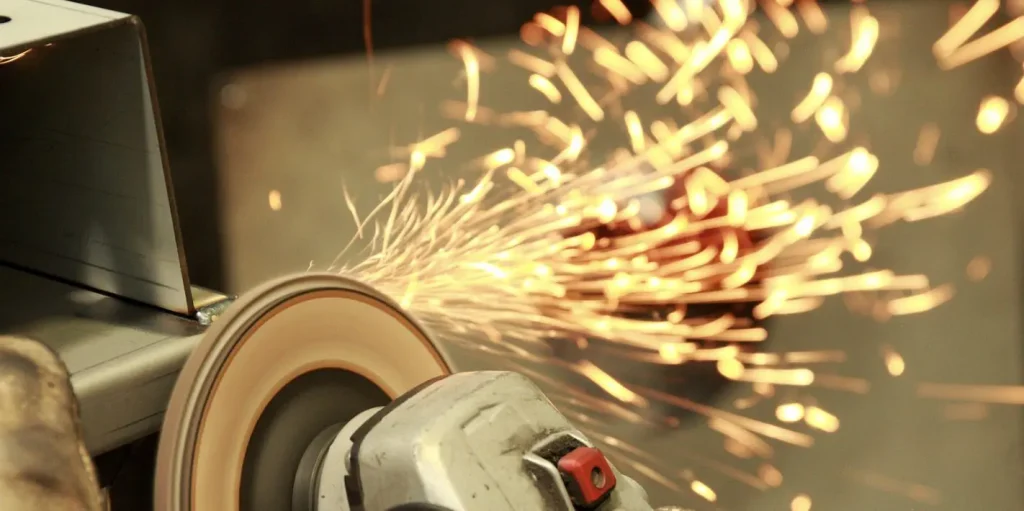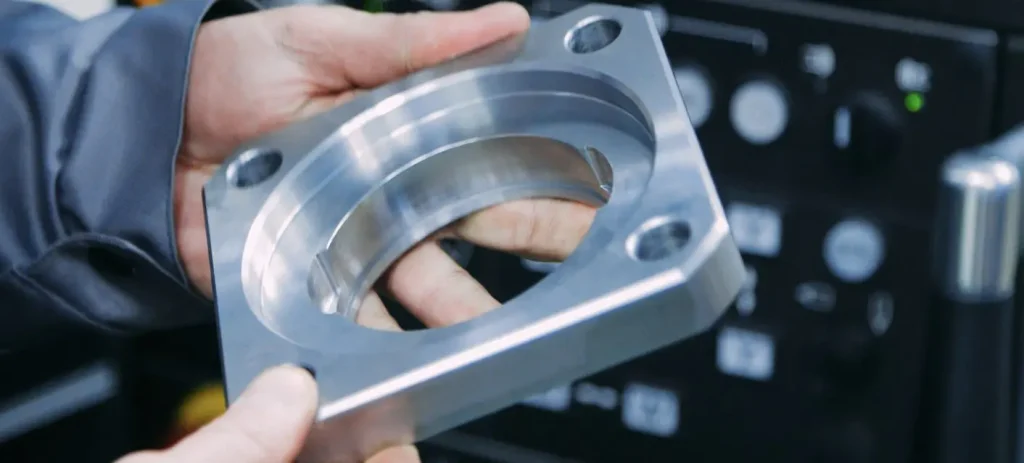Is Stainless Steel Hard to Machine? Exploring Challenges and Varietal Differences

What is Stainless steel?

Stainless steel is an alloy widely used in both daily life and industry, thanks to its excellent corrosion resistance, strength, and workability.
It is used in various fields, from kitchen utensils to building materials, medical equipment, and automotive parts.
Stainless steel is an alloy made by adding chromium, nickel, and other elements to iron. The addition of over 10.5% chromium forms a protective chromium oxide film on the surface, which significantly enhances its resistance to rust (corrosion resistance).
Furthermore, the addition of nickel improves corrosion resistance, workability, and strength, allowing it to be used in a wide range of environments.
Due to its corrosion resistance, stainless steel is widely utilized in various industries, including kitchen utensils, building materials, medical equipment, and automotive parts.
Additionally, different types of stainless steel are suited for specific applications, such as non-magnetic austenitic stainless steel and magnetic ferritic or martensitic stainless steels. For applications requiring high-temperature strength, heat-resistant alloys may be selected.
Types of Stainless Steel

Stainless steel is classified into several series based on its composition and crystal structure, with the three main types being austenitic, ferritic, and martensitic.
Austenitic Stainless Steel
Austenitic stainless steel is composed of chromium and nickel alloys and is the most commonly used type of stainless steel.
The addition of nickel allows it to maintain a stable austenitic phase at room temperature, making it non-magnetic and giving it excellent toughness and corrosion resistance.
It also features good formability and weldability, making it widely used in kitchen utensils, piping materials, and building materials. Representative grades include 304 (18-8 stainless steel) and 316 (which contains molybdenum for enhanced corrosion resistance).
Ferritic Stainless Steel
Ferritic stainless steel has chromium as its main component and contains very little or no nickel.
Due to its ferritic phase crystal structure (body-centered cubic structure), it is magnetic. While it offers excellent oxidation resistance, it has lower toughness and formability compared to austenitic steel.
It is commonly used in automotive exhaust system parts, kitchen sinks, and building materials, with 430 and 439 being well-known grades.
Martensitic Stainless Steel
Martensitic stainless steel is an alloy of chromium and carbon known for its high hardness and strength.
It can be hardened by heat treatment, making it suitable for applications requiring high wear resistance, such as knives, tools, and industrial bearings.
It is magnetic and, like ferritic steel, has oxidation resistance, but its corrosion resistance is inferior to that of austenitic steel.
Representative grades include 420 and 440C.
Stainless Steel Processing Methods

Here are some common stainless steel processing methods:
Cutting Processing
Stainless steel is difficult to process due to its tendency to work harden and its low thermal conductivity.
Heat generated during cutting can concentrate on tools, reducing their lifespan. Effective countermeasures include using plenty of cutting oil and selecting appropriate tool shapes.
Welding
Common welding methods for stainless steel include shielded metal arc welding, submerged arc welding, laser welding, and gas welding.
Challenges include material deformation caused by heat and the requirement for high welding skill levels.
Surface Treatment
Surface treatments for stainless steel include painting, plating, chemical coloring, and etching.
These treatments enhance rust resistance and allow for various color finishes.
Why Stainless Steel is Difficult to Process

Poor Thermal Conductivity
Stainless steel has relatively low thermal conductivity due to its composition.
As a result, heat does not disperse uniformly throughout the material during processing but tends to concentrate at the processing site., potentially causing excessive thermal load on tools, leading to excessive wear and damage. This can lead to excessive thermal stress on tools, increasing wear and damage.
Tendency to Work Harden
Work hardening commonly occurs when processing stainless steel.When force is applied, the crystal structure changes locally, increasing hardness.This makes processes such as cutting and drilling more difficult.
Metal Chips Easily Adhere to Tools
During stainless steel processing, metal chips tend to stick to tools more easily than with other materials.
This is especially noticeable in high-speed cutting operations, where chips adhere to the tool’s cutting edge, reducing sharpness.
Different Processing Methods for Different Types of Stainless Steel

There are multiple types of stainless steel, including austenitic, ferritic, and martensitic, each with its own chemical composition and physical properties.
The differences in these properties require specific approaches in processing methods, necessitating caution.
For example, austenitic steel is non-magnetic and prone to work hardening, so low-speed processing and special tools are recommended for cutting.
On the other hand, ferritic and martensitic steels require different processing techniques from the perspectives of heat resistance and hardness.
Trust Koyo High Precision for Machining Materials
At Koyo High Precision, we combine cutting-edge technology with years of hands-on experience to expertly handle the machining of even the most difficult-to-cut materials.
No matter how challenging the material, we can identify the perfect machining conditions by carefully monitoring chip formation, tool wear, cutting surface quality, and even the sounds during machining.
We are committed to providing customized solutions that meet your unique needs. Contact us today for consultations or quotations — we’re here to help with all your difficult-to-machine material requirements.
